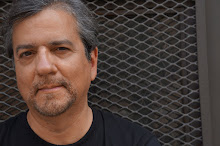In the boxing ring, the ceremonial ringing of the bell... sets into motion the authority of Time...When a boxer is "knocked out" it does not mean, as is commonly thought, that he has been knocked unconscious, or even incapacitated; it means rather more poetically that he has been knocked out of Time. (The referee's dramatic count of ten constitutes a metaphysical parenthesis of a kind through which the fallen boxer must penetrate if he hopes to continue in Time.)... Counted out, he is "dead," in symbolic mimicry of the sport's ancient tradition in which he would very likely be dead.
I have never thought of boxing as a sport. There is nothing fundamentally playful about it; nothing that seems to belong to daylight, to pleasure. At its moments of greatest intensity it seems to contain so complete and powerful an image of life - life's beauty, vulnerability, despair, incalculable and often self-destructive courage - that boxing is life, and hardly a mere game... One plays football, one doesn't play boxing.
In writing my play Stand-Up Guys, I knew that I was drawing on Budd Schulberg's incomparable script for On the Waterfront, just as I was drawing on the story of Pietro Panto and the very real history of the mob on the Red Hook piers. I knew, of course, that Brando's Terry Malloy was an amateur boxer who had "thrown" some fights at the urging of his brother and knew, further, that there was a lot of brawling, both inside the ring and out, that went on "down the Hook" in 1930's through 1970's. Finally, being a student of boxing, I knew that fighters like Ali, Patterson and Tyson had trained at Gleason's Gym, back in the day when it was in Manhattan's Tenderloin, and so - after it had moved to DUMBO in 1985 - I went down there and started training there myself.
In 1968 Muhammad Ali came to see Howard Sackler's play The Great White Hope on Broadway, starring a young James Earl Jones. At the time, Ali's boxing license had been suspended and his passport seized at the behest of the federal government over his refusal on religious grounds to fight in Vietnam, and he was reviled by a large segment of white society. After the show, Ali met Jones. The house was empty and the stage was bare, save for the ghost light, when Ali met Jones and told him that the play had affected him deeply "That's my story," Ali said. "You take out the issue of white women and replace it with the issue of religion. That's my story!"
Ali's cornerman, Drew "Bundini" Brown, used the boxer's affinity for Johnson to encourage him in the ring. During several of Ali's major fights, Bundini was heard to call from the corner, "Ghost in the house! Ghost in the house! Jack Johnson's here! Ghost in the house!"



No comments:
Post a Comment